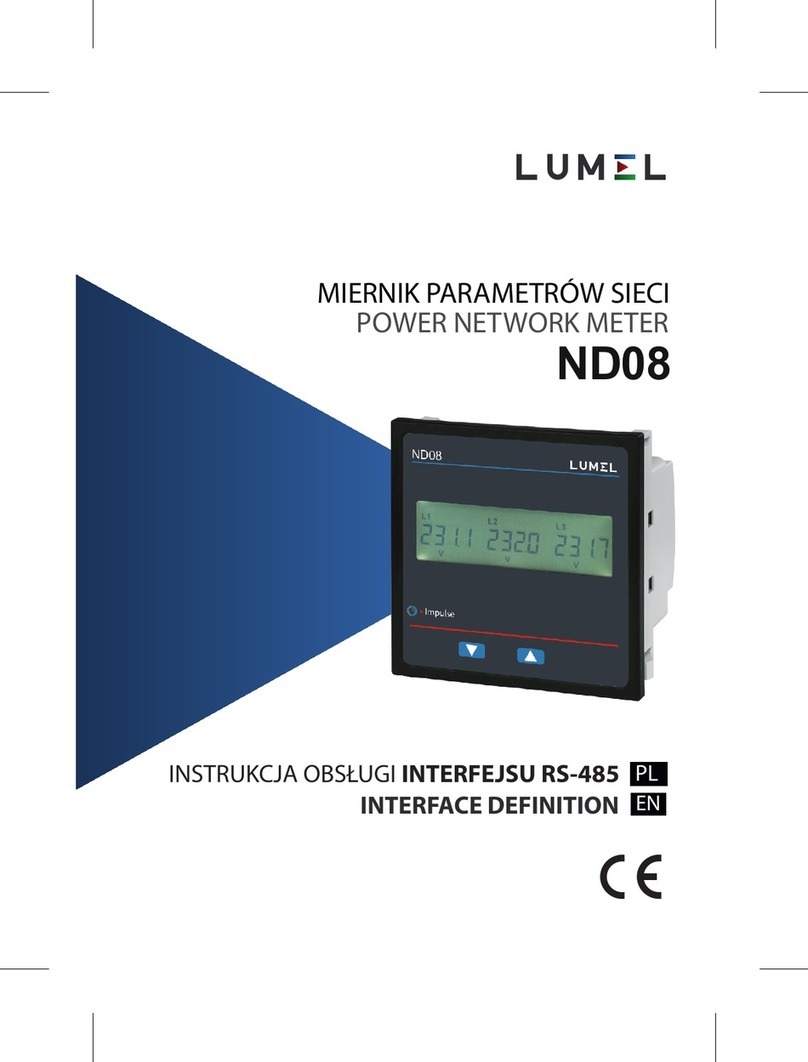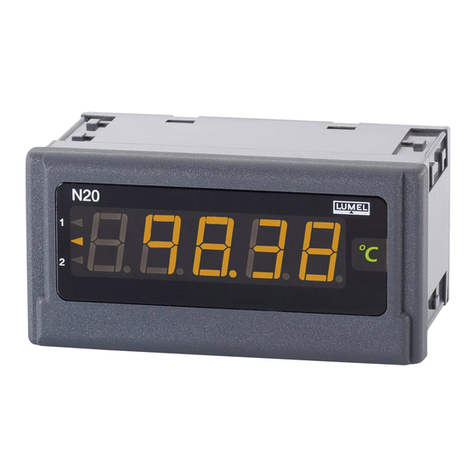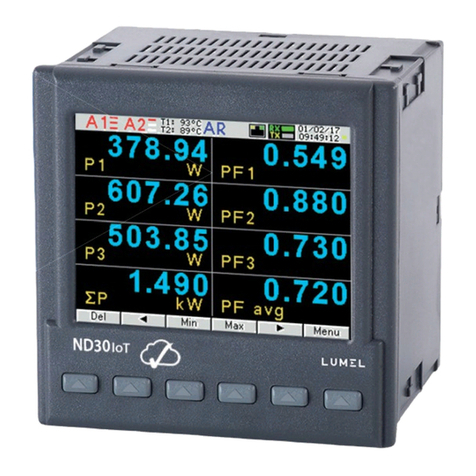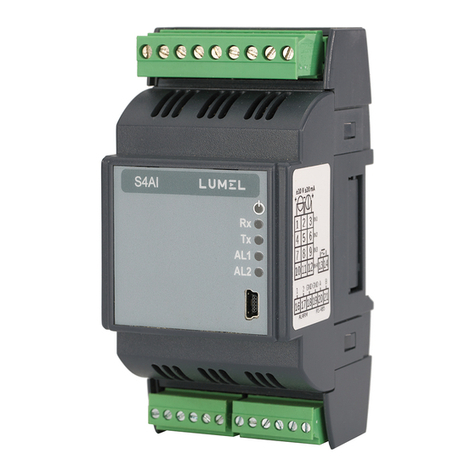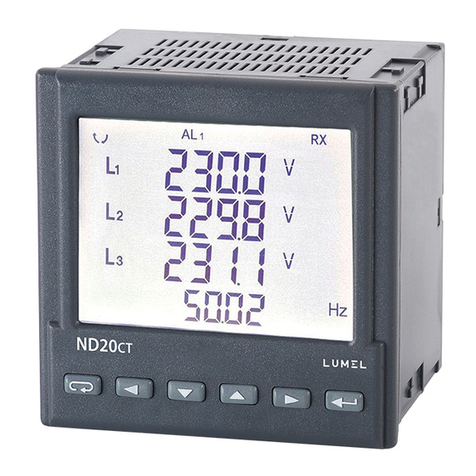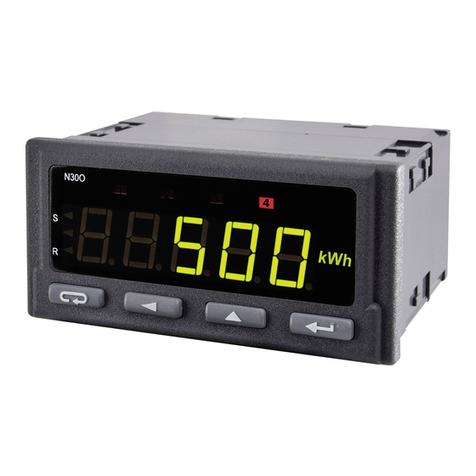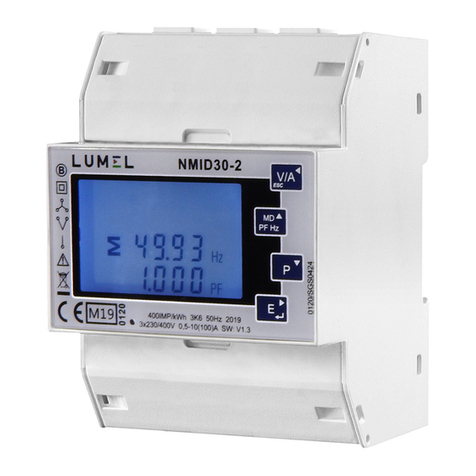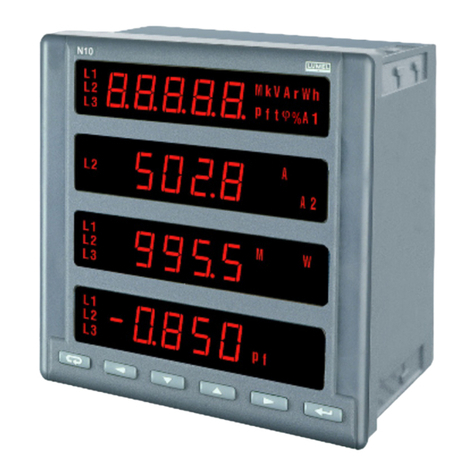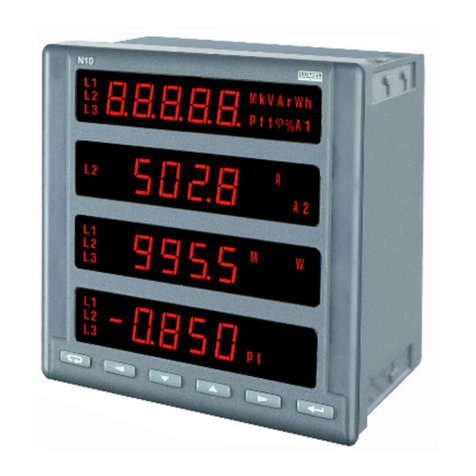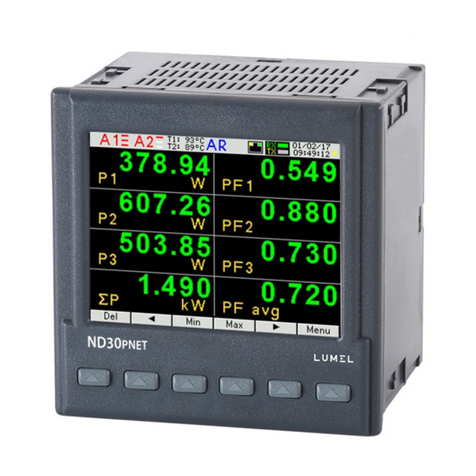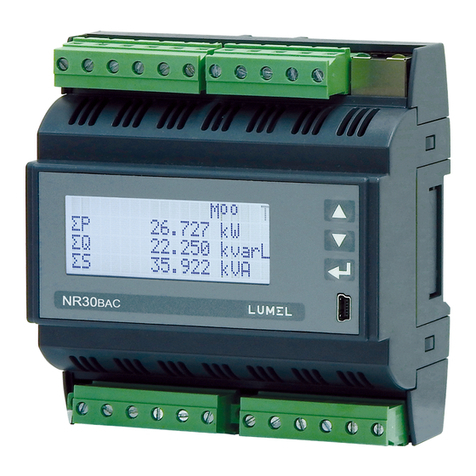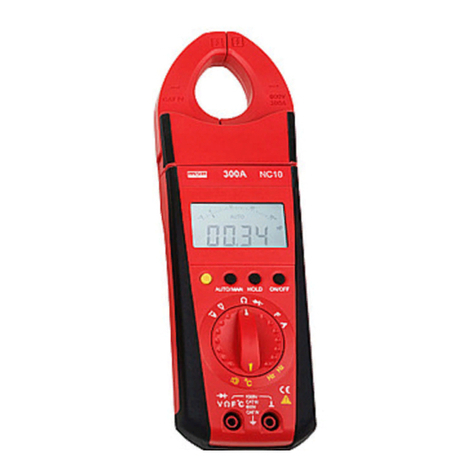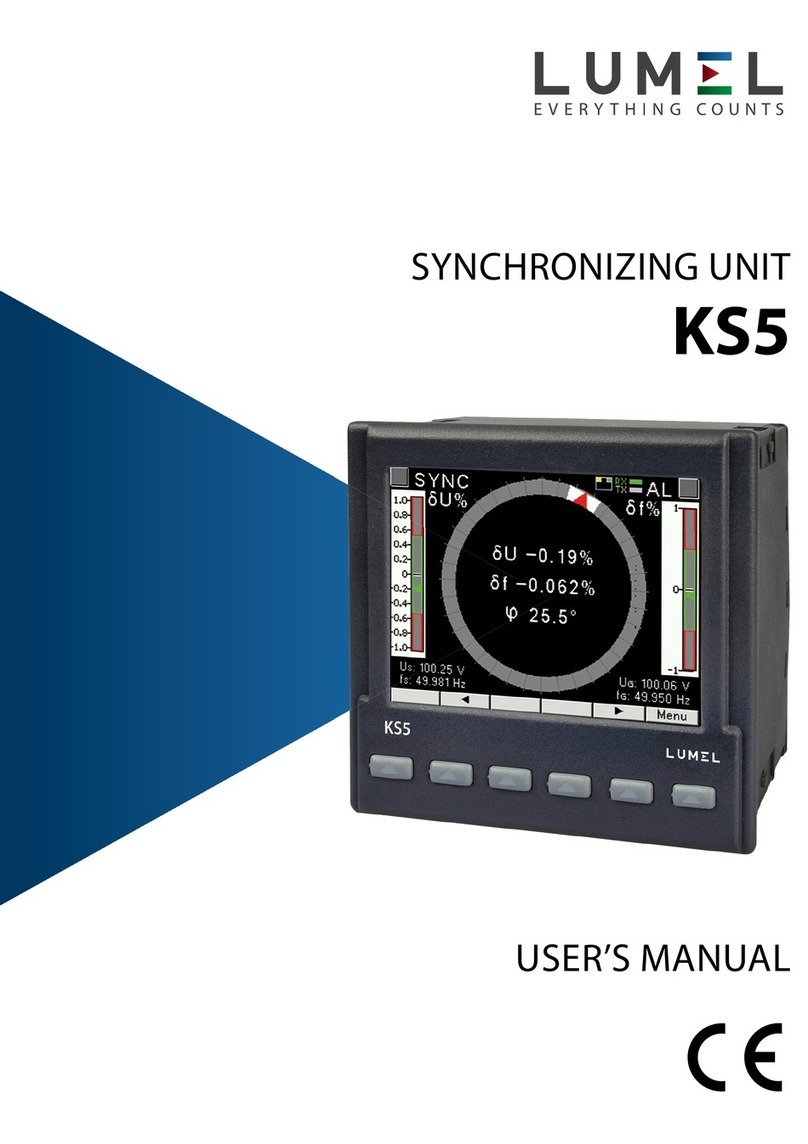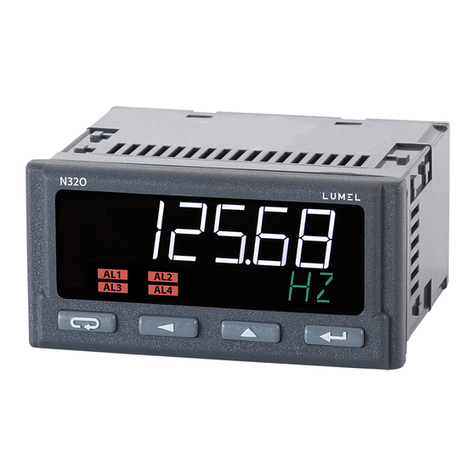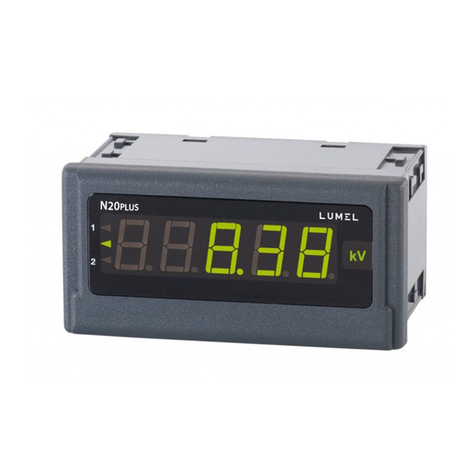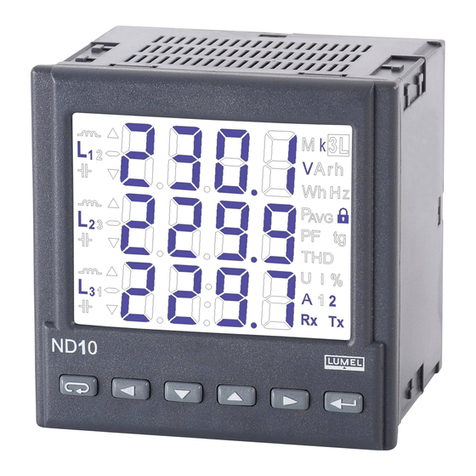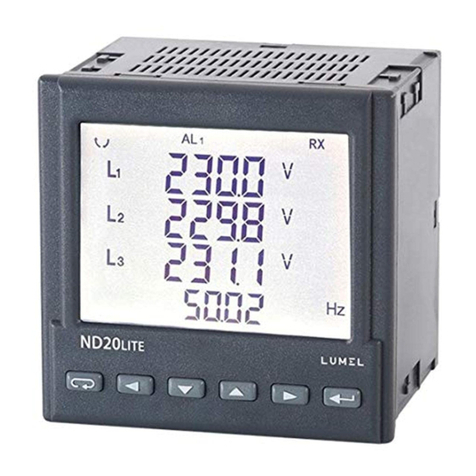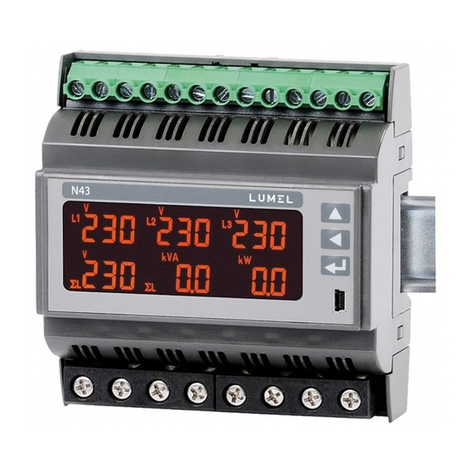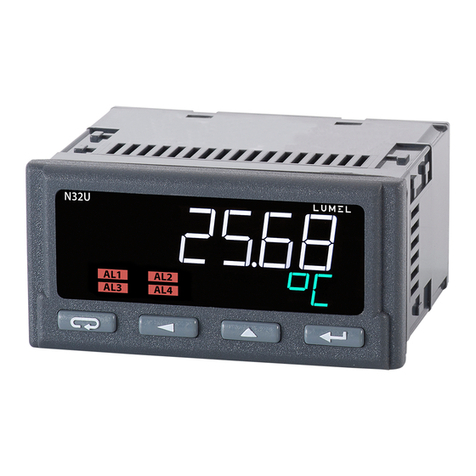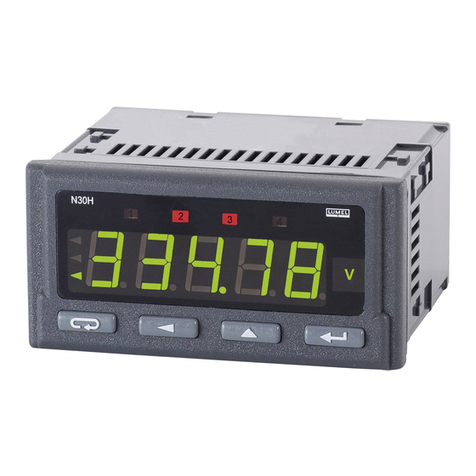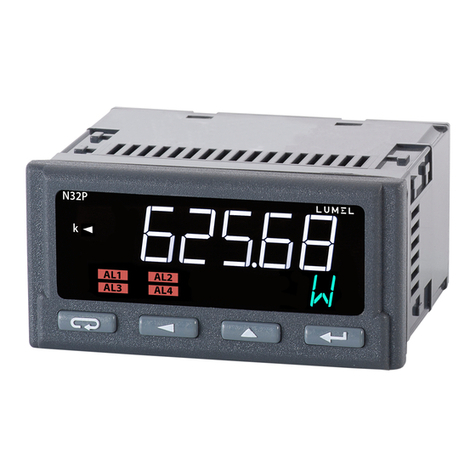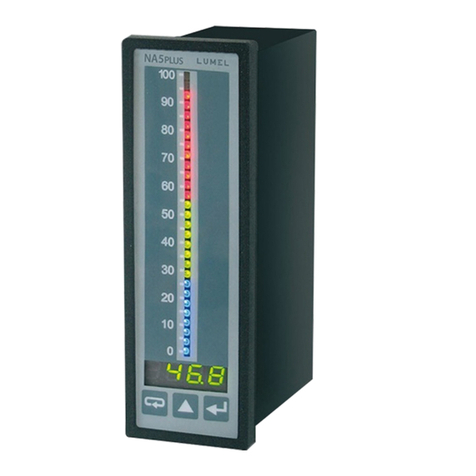
8
5. DANE TECHNICZNE
Zakresy pomiarowe i dopuszczalne błędy podstawowe
Tablica 4
Wielkość mierzona Zakres wskazań Zakres
pomiarowy L1
Błąd
podsta-
wowy
L2 L3 S
Prąd 1/5 A L1...L3 0,00...9,99 kA 0,02...6 A~ ± 0,5%
Napięcie L-N
Napięcie L-L
0,0...289 kV 2,9...480 V~ ± 0,5%
0,0...500 kV 10...830 V~ ± 1%
l l l
± 0,2%
Częstotliwość 45,0...100,0 Hz 45,0...100,0 Hz
Moc czynna
Moc bierna
Moc pozorna
Współczynnik PF
Energia czynna
pobierana
0...99 999 999,9 kWh
Energia bierna
indukcyjna
0...99 999 999,9 kvarh
-1 .. 0 .. 1
-999 MW...0,00 W
...999 MW
-999 Mvar...0,00 var
...999 Mvar
0,00 VA...999 MVA
-1 .. 0 .. 1
1,4 VA...2,64 kVA
-2,64 kvar...1,4 var
...2,64 kvar
-2,64 kW...1,4 W
...2,64 kW
± 1%
± 1%
± 1%
± 2%
± 1%
± 1%
l l l
l l l
l
l l l l
l l l l
l l l l
l l l l
l l
*Zależnie od ustawionej przekładni t_U (przekładnia przekładnika napięciowego:
1 .. 4000) oraz t_I (przekładnia przekładnika prądowego: 1 .. 10000)
l l
Pobór mocy:
- w obwodzie zasilania 6 VA
- w obwodzie napiêciowym 0,05 VA
- w obwodzie pr¹dowym 0,05 VA
Pole odczytowe: 3 ´ 3 cyfry LED koloru czerwonego, wysokoœæ 14 mm
Wyjœcie przekaŸnikowe: przekaŸnik, styki beznapiêciowe zwierne
obci¹¿alnoœæ 250 V/ 0,5 A
Interfejs szeregowy RS-485: adres: 1 ..247, tryb: 8N2, 8E1, 8O1, 8N1;
prędkość: 4.8, 9.6, 19.2, 38.4 kbit/s,
Wyjœcie impulsowe energii: wyjście typu O/C, pasywne, klasy A wg
PN-EN 62053-31; napięcie zasilania 18... 27 V, prąd 10... 27 mA
Uwaga! - Dla prawidłowego pomiaru prądu wymagana jest obecność napięcia
o wartości większej od 0,05 Un przynajmniej na jednej z faz.
Tangens j-1,2 .. 0 .. 1,2 -1,2 .. 0 .. 1,2 ± 2%
llll
Kąt pomiędzy U i I -180 .. 180o-180 .. 180ol± 0,5%
Energia czynna
oddawana
0...99 999 999,9 kWh
l
l
Energia bierna
pojemnościowa
l
0...99 999 999,9 kvarh l
± 1%
± 1%
Zakres wskazań*
Zakres pomiarowy
Ki; Ku = 1
PL












